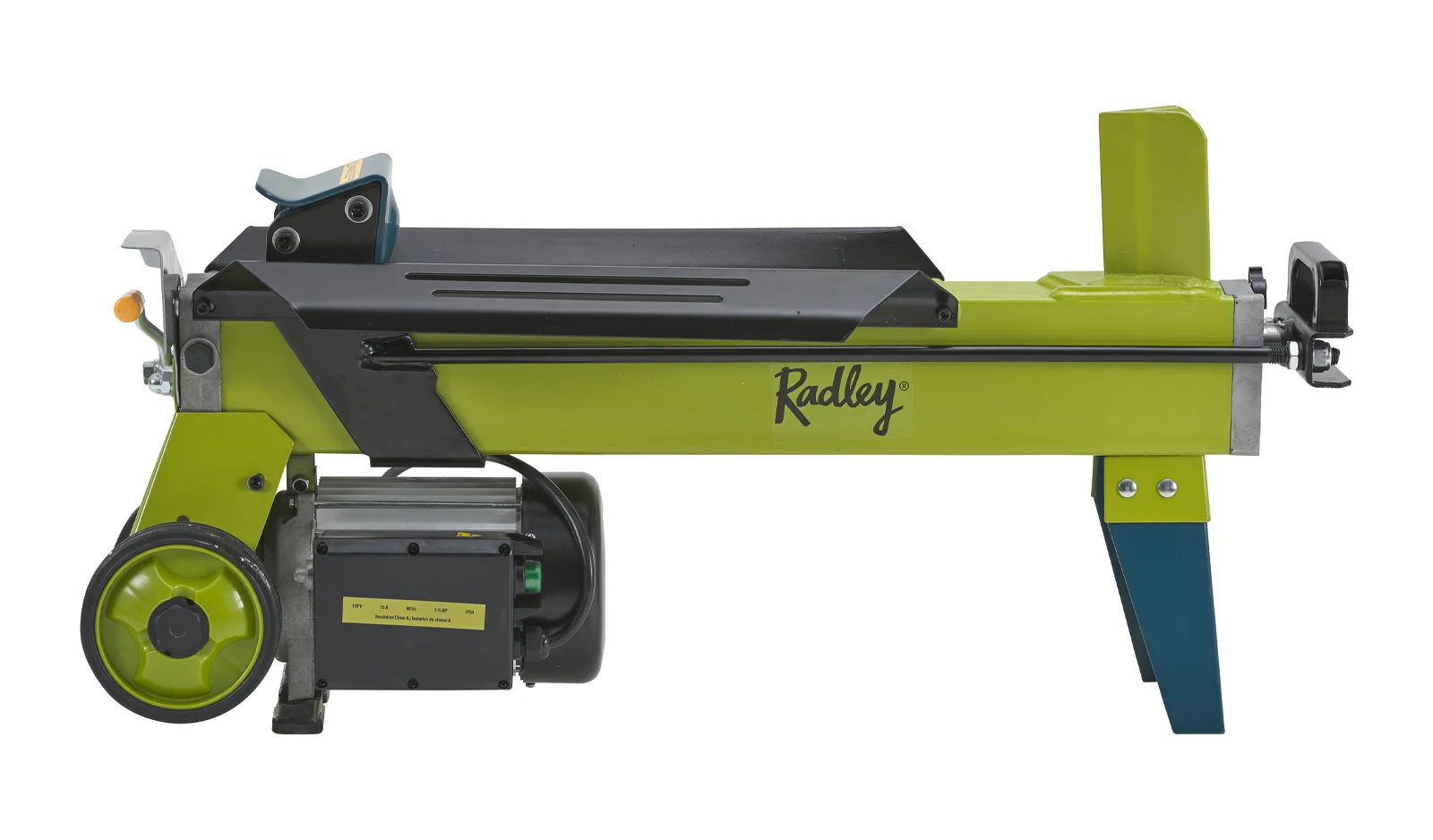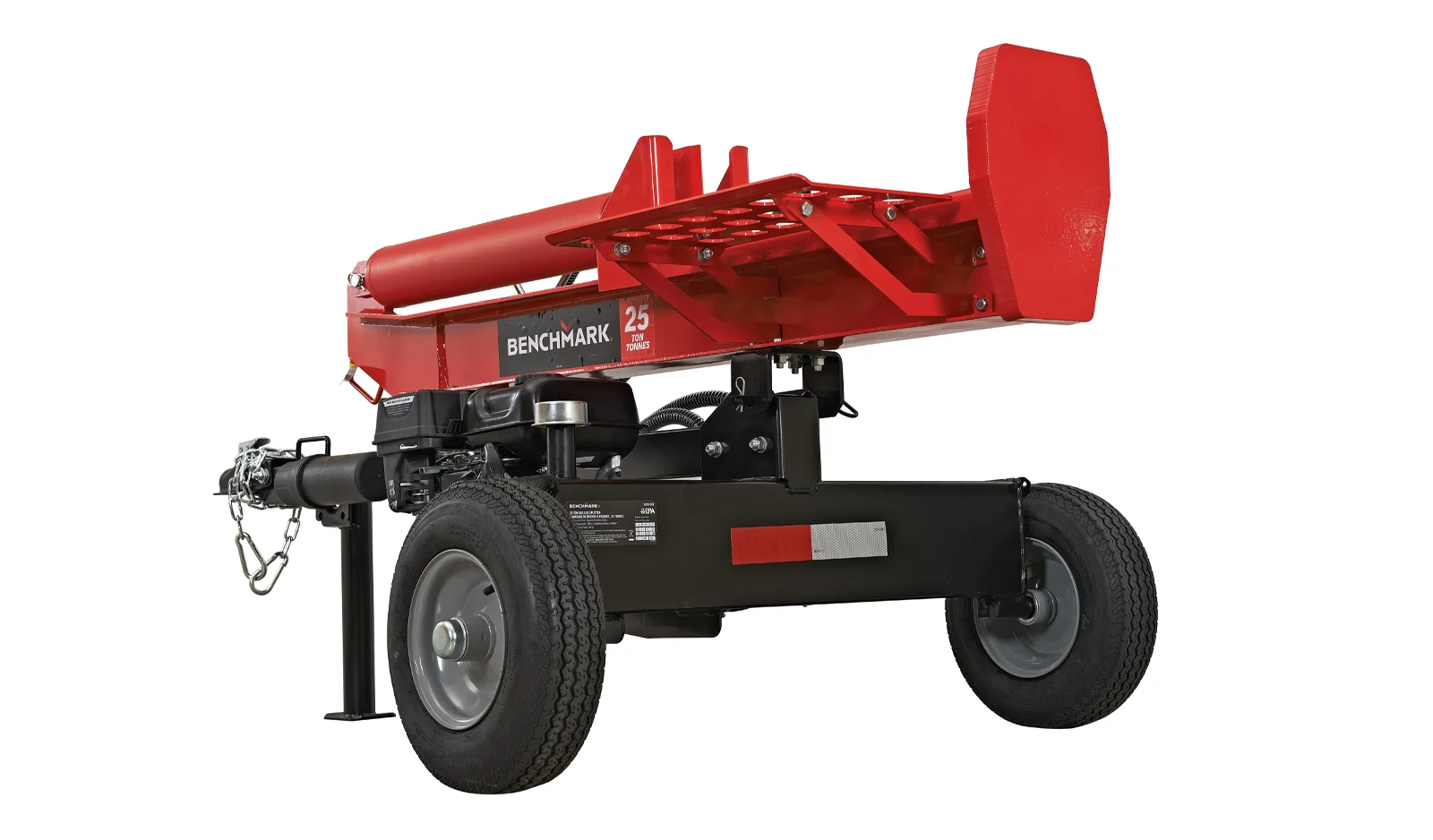Here’s How to Choose the Right Log Splitter for Your Firewood Needs
A good log splitter will save you time and effort. Find the right log splitter for your needs to make much shorter work of processing firewood. A good fit is determined by the kind of wood you’ll be splitting, the average log size and where you’ll be working. Here’s what you need to consider.

Types of Log Splitters
Depending on your firewood use and fitness level, you may prefer a power or manual log splitter. The former runs on electricity or gas while the latter depends on your muscle power. Here are your options.



Buying Considerations
A log splitter’s power is determined by the amount of force it can apply to a log. This is rated in tonnage. The following three factors most influence the tonnage rating you should look for in a power log splitter.
Log Size
(Diameter)
A log splitter works by applying pressure to split the wood along the grain. The thicker the log, the more wood there is to force apart on either side of the grain — larger diameter logs need more pressure to split. For example, a 6-inch seasoned log needs 6 tonnes of force, while a 24-inch one needs 20 tonnes
Green Wood vs. Seasoned Wood
The high moisture content of freshly cut “green” logs make them more difficult to cut than properly seasoned dry wood. For example, a 12-inch green log requires 16 tonnes of force to split, while the same-thickness seasoned wood requires only 7 tonnes. For best results, dry your logs for at least six months before splitting them.
Wood Density & Hardness
Hardwoods like oak and hickory are dense with very little space between the wood fibres, so a higher tonnage log splitter will work better. Softwoods like pine are lighter with widely spaced wood fibres so a lighter unit will do the job. If you process both soft and hard woods, opt for more rather than less power.
Firewood & Log Splitting Accessories
Once you’ve purchased your log splitter, you’re ready to start making your own firewood. Here are additional tools and accessories that can help get you from firewood chopping to fireside loafing with less time and effort
Axes
Invest in a lightweight, portable axe for smaller jobs around your cottage or campsite.
Splitting Wedges
Save time with a splitting wedge designed to optimize your axe work by splitting wood more quickly.
Log Grates & Holders
Combining form with function, a log grate is a must-have that helps you store your firewood indoors with ease and style
Log Carriers
Tote firewood from your wood pile to your fireplace with an ergonomic log carrier that collapses when not in use
Log Racks
Store your seasoned firewood off the ground (indoors or out) with a log rack so it stays dry and ready for use.
Log Rack Covers
Use a log rack cover to protect your seasoned firewood from the elements so it’s always dry and ready to us
Moisture Meters
A moisture meter is a foolproof way to check if your green wood is fully seasoned or needs more time to dry for better log splitting
Wheelbarrows
Move your freshly split firewood to its storage destination with a heavy-duty wheelbarrow